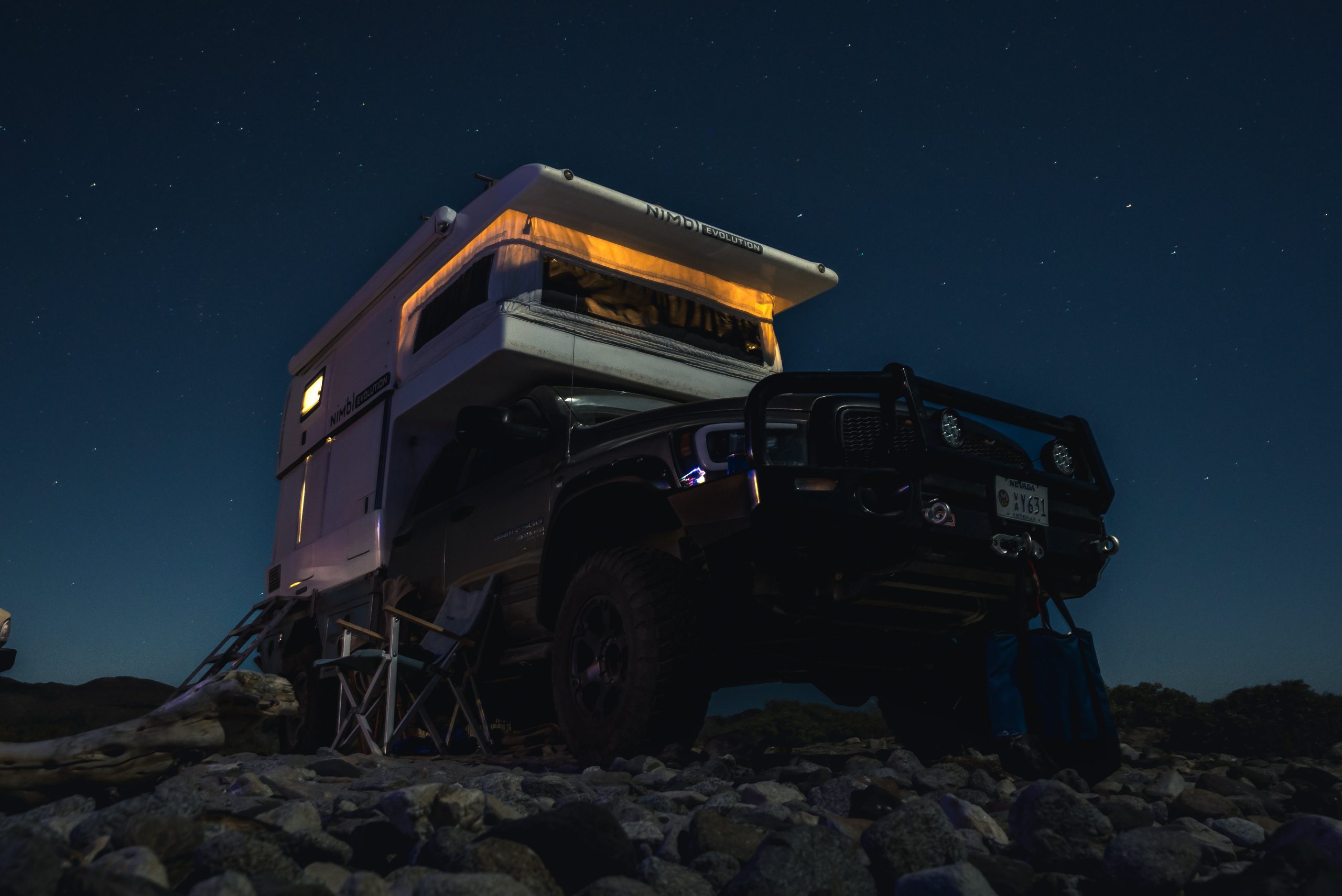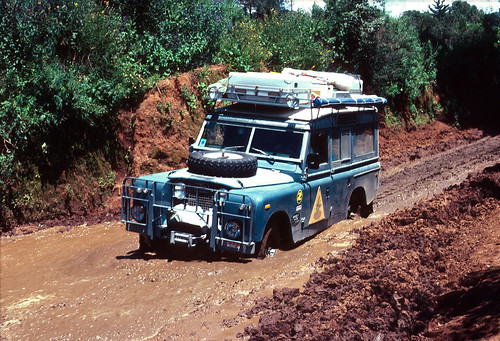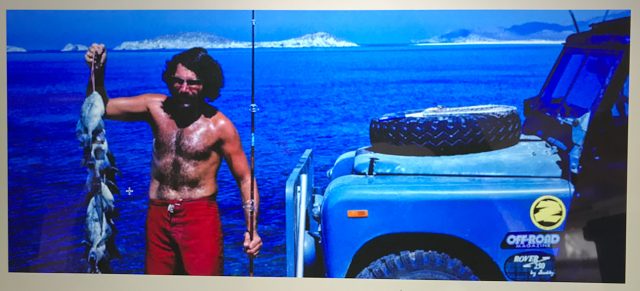Photo by Jorge Gonzalez
(with opinions from Gary Wescott and Ron Moon)
I engaged low range and squeezed our Dodge Ram camper up the trail between wild, clawing thorn bushes and tall cacti. I could hear the paint protest as pinstripes streaked across the doors. The tires crunched wide. I was unfazed; pinstripes add character, and my mud-terrain tires are designed to withstand sharp rocks, and thorns pose no real threat. Later, driving slowly through the colonial town of Mulege, I edged past road signs and parked cars, hoping not to harm either. Yes, heavy duty pick-ups are wide and long but, I have no problem with that, given the advantages.
The vehicle we are driving across Latin America is a 2006 Dodge Ram 2500, boasting the superb 5.9-litre Cummins diesel engine and mated to a Nimbl camper. I could not be happier. For more than a decade, I have toured the planet, living full time on the road with my family of four and our Land Rover Defender camper (which is waiting for us in Cape Town). We absolutely adore our Defender, but if I am honest, we have struggled with lack of packing space, lack of power, right-hand drive, and relatively basic equipment. The old Defender has a low-capacity turbo-diesel engine that is not as powerful as it could be, but the fuel economy is not terrible, and the Defender is a joy to look at and drive off-road. While only three years younger, the Dodge is a different beast altogether. We call the Dodge camper Major Tom as it is quintessentially American—powerful, capable, practical, and, when mated to the camper looks kind of futuristic. Major Tom is well built and can carry a mountain or tow an ocean.
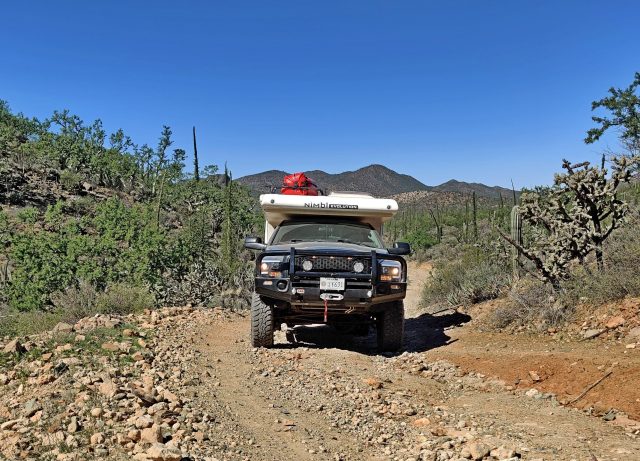
Now, let’s be clear—there are different types of overlanders, and what suits me won’t necessarily suit you. Some overlanders seek trails and 4WD routes, and design, build or purchase vehicles accordingly. Some overlanders occasionally travel dirt roads and do not see the need for 4WD, while other overlanders travel internationally, with or without families, with or without the need for 4WD. We all have our own style of travel and needs. My family enjoys moderate 4×4 trails, which lead from A to B. We enjoy beaches and mountain passes and solitude and self-sufficiency, and we are confident that Major Tom will be able to drive 99 percent of the routes which we have driven in our Defender (which includes a circumnavigation of South America, a crossing of the Amazon, the entire Pan-Am, and West and most of East Africa). The heavy-duty vehicle suits our needs and style of travel.
To confirm our opinion, we reached out to Gary Wescott (USA) and Ron Moon (AU). Both are well-respected overland travelers who have extensively explored the planet, and both decided to upgrade to large, heavy-duty pickups.
Gary of Turtle Expedition, says,
“The question often comes to my mind, have we gotten softer or smarter? After traveling throughout Mexico and Central America for nine years in our reliable 109 Land Rover, we were camped someplace; I think it was Belize. We were preparing dinner in our outdoor kitchen. It was hot, humid, and raining.
There were mosquitoes and other bugs flying around and lots of curious people staring at us. It occurred to me that we really needed a camper where we could stand up, close the door, and cook dinner.

All of our vehicles, from Land Rover days to the current Turtle V, have had the same basic requirements: a comfortable bed for two people, a kitchen to cook healthy meals, and some way to stay clean. At the same time, the vehicle needed to be small enough and capable of following the really bad roads that lead to the special places we love to explore.
Rooftop tents or small camping trailers were out of the question. After seeing some of the extremely comfortable and well-engineered expedition campers built in Europe by companies like Unicat and Langer & Bock, the answer was easy—we had to go bigger. Avoiding the utility trailers we laboriously towed behind Turtles I and IV, the Turtle V, with its European-style camper on an F-550 was the answer”.

For the past 40 years, globetrotters and photojournalists Gary and Monika Wescott have driven from the arid deserts of Afghanistan to the deepest jungles of the Amazon and across the frozen steppes of Siberia, with sometimes no more than a camera and a backpack.


Their travel and adventure stories have been published in 15 countries and in 10 languages around the world. You can discover more about this fascinating couple via their website turtleexpedition.com.
Ron Moon’s experience has been similar.
“In the last seven years as we’ve wandered North America in our Ram 2500 and Four Wheel Camper (after five years driving around the world and 70 countries and going to the Overland Expo West on four occasions), we often wondered why there seemed to be kickback against the locally made pickups and a fixation on Land Cruisers and Land Rovers.
Don’t get me wrong, the Landies and the Cruisers make great overland rigs (we currently own a 79-Series dual-cab Cruiser and a custom-stretched, dual-cab GU Nissan Patrol in Australia), but the big Fords, Chevys and Rams make a fabulous base for an overland rig. With more space, more load-carrying ability, and more towing capacity than either the Cruisers or the Rovers, you’ll appreciate the extra potential and capability.
There’s another big point in their favor here in the USA and Canada. Spare parts and the expertise to repair them are very common and widespread throughout the Americas, and you’ll find that hard to replicate.
On our five-year sojourn around the world, we were joined by a couple of different mates at different times. One was an American in a GMC who we met in Australia and who traveled through Africa with us and two other mates, both in Ford F250s. One went around the world with us, while the other traveled across Russia with us. They all still own their big rigs, still travel extensively, and wouldn’t trade them for anything else.
For ourselves, after wandering the West of the USA, Eastern Canada, and Mexico for the last few years in the Ram/FWC combo, we’re hitting the road in the US for a circumnavigation of the lower 48 States (again), for three months beginning in early April. You may see our biggish rig. Wave or stop and say, “G’day mate.”
Follow Ron and Viv Moon at guidebooks.com.au, or on Facebook @OverlandingAusandWorld.
As if you need more convincing, here are elaborated considerations of the positives of a big rig.
Payload and Packing Space

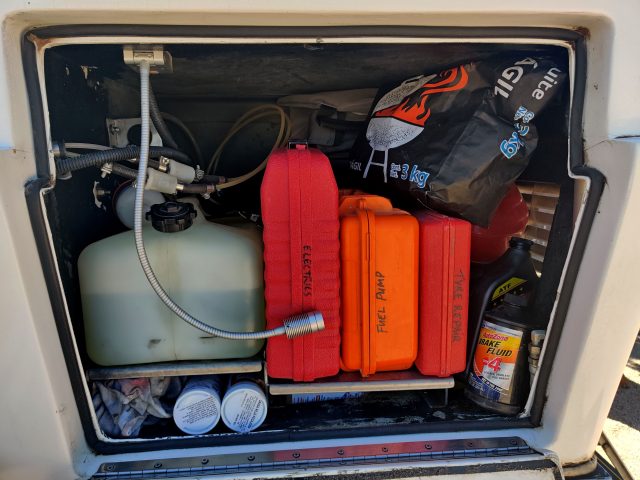
The Dodge Ram/Nimbl combo offers us the opportunity to carry all the gear we need and then some. Yes, less is certainly more, but we now have space to load extra groceries, 75 gallons of water, tools, firewood, camping gear, accessories, and clothing for all seasons. As a family of four who carry all they own, it is liberating to be fully equipped and not be too concerned about weight and space. The extra food, fuel, and water allow us to travel farther and stay out there longer, and that alone is worth the relatively insignificant hassle of extra width and length.


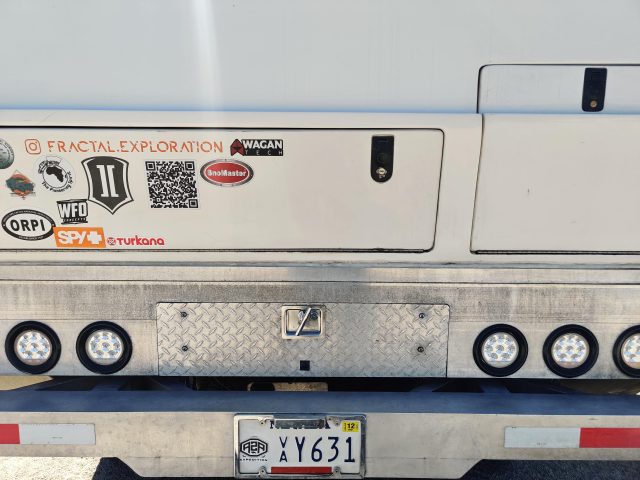

Power
Full-size trucks usually have big power, and the Cummins diesel is a stonker of an engine. I can mash the accelerator into the mat and the fully loaded Dodge will fly past a truck and trailer on a steep mountain pass. A powerful vehicle is safer to drive if driven respectfully, and to have that extra oomph available at any time ensures that we can overtake, escape, or put the hammer down and get to medical assistance, if necessary. This provides peace of mind, especially when traveling with a family. One big bonus—the Cummins diesel engine achieves an average of 15 mpg. A large MAN or Volvo truck can achieve as little as 5 mpg, making the difference significant not only in terms of cost but also range.
Capability
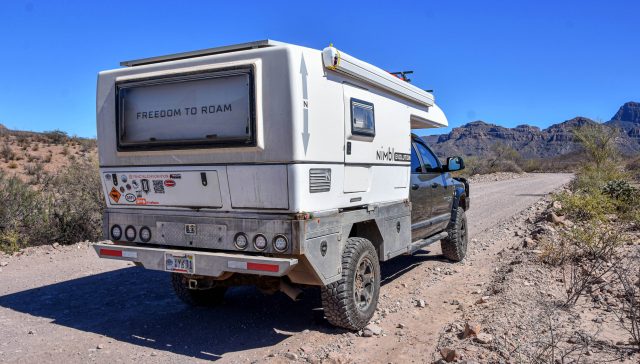
When driving on the beach, I deflate the tires (as much as needed), engage low range, and feather the throttle. No problem. With power on tap and intelligent driving techniques, the large vehicle is surprisingly capable. At first, we were concerned that deep sand would be the vehicle’s nemesis, and it may well be, but we were surprised how capable the Dodge is. Driving rough trails, we found that the vehicle has more than enough power and articulation to handle deep ruts and inclines with ease (the Icon suspension and 35-inch tires certainly help). No, I would not drive this vehicle across extreme Jeep tracks, but I would not drive my Defender on those tracks either. The vehicle is my home, and I live in it with my family most days of the year. The capability that impresses us is the capability of necessity. I have no doubts whatsoever that we could drive this vehicle across the Amazon (which we may well do) or across West Africa (which I never want to do again, until next time).
Size
Imagine trying to overland internationally (or even domestically) with a Unimog or a MAN truck. Imagine trying to drive on soft sand, through small villages, and on winding mountain passes. I have imagined doing just that, and I don’t want to do it. The full-size or heavy-duty pickup is capable of carrying all the gear and toys you need. Do you want to hang a KTM off the back? Go for it, once you have upgraded the suspension. Do you want to load a bicycle, kayak, surfboard, and a SUP? Why not? Yes, of course, you must not overload the vehicle, but intelligent choices based on style of travel and priorities will ensure you get the most out of the journey without too much compromise.

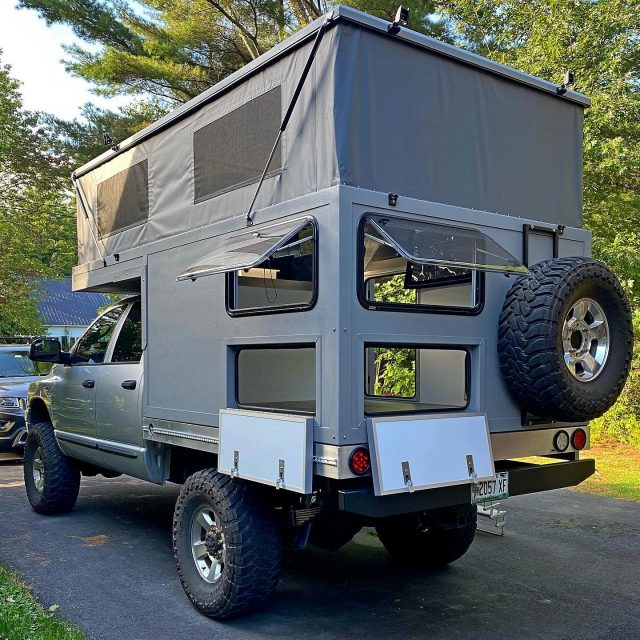
The full-size truck offers the opportunity to carry a camper (preferably a pop-top), which offers ample living space and luxury, and the addition of a large awning with walls, extending that living area even further. Or you could throw a topper on the bed and travel the Pan-Am like our friends Nate and Sarah did. The couple returned from South America and built a beautiful pop-up camper on their Ram 2500.
Comfort
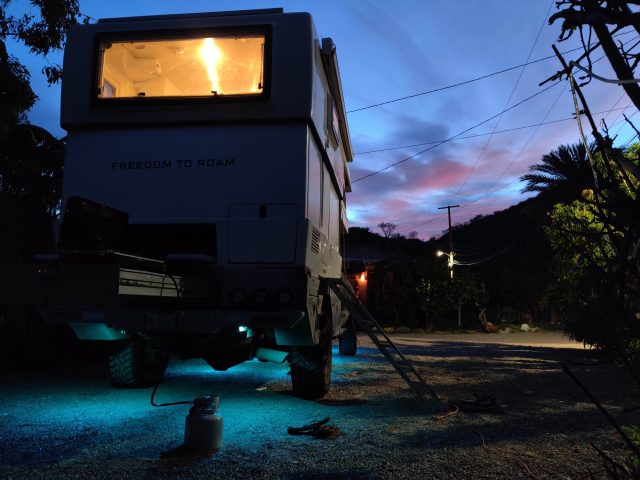
Modern trucks are made to be comfortable. The seats are large and plush, passengers have ample legroom and personal space, there are storage cavities throughout the cabin, the air-con works, the driving position is high and commanding, and a long drive does not feel like torture. The comfort of a well-designed camper is liberating as you will be rested and ready for whatever the road throws at you. For us, luxury is ventilation, ample storage, and space to relax, prepare a meal, and plan the trip, while running devices off of the house batteries, and perhaps enjoying a cold drink. A built-in toilet and shower ensures that the family is happy, healthy, and clean, even in the most difficult environments. These comforts keep us happy and motivated while doing the extraordinary.
Safety
There may be as many opinions about the safety of pickup trucks as there are actual pickup trucks. According to a now out-of-date University of Buffalo study (but relevant to the year and make of vehicle which we, the Wescotts, and the Moons drive) that measured the highest and lowest frequency of personal injury, pickups like the Ram 2500 Mega Cab, Ford F-150, and GMC Sierra 2500 Heavy Duty were found to be some of the safest vehicles. The study surveyed 360 vehicle models based on insurance loss data from the Highway Loss Data Institute (a non-profit organization). It stands to reason that, when driven responsibly at conservative speeds, a big rig offers a height and weight advantage, while a modern vehicle boasts safety features such as anti-lock brakes and airbags. Considering we generally drive defensively at low speeds, we feel the safest while driving the Ram 2500.
Cost
All things considered , a well-maintained and prepared full-size pickup is significantly cheaper and more convenient than some smaller, specialized options or larger trucks. Diesel is preferable; less is more; spare parts are generally available and relatively inexpensive, while aftermarket products are also readily available, particularly in North America. For domestic travel in the USA and Canada, a new full-size vehicle is more than up to the task, but modern engines are not designed to run on lower-quality fuel typically found in most countries south of North America or Europe. A quick internet search revealed a handful of relatively low-mileage 2006 Dodge Ram 2500 trucks with 5.9-litre Cummins diesel engines, all at around $20,000. These trucks are a great base for a DIY or purchased bed/flatbed camper or rooftop tent and storage system. At the other end of the spectrum, a bespoke camper on an F-550 base could cost more than a house in California. The point is that you have options.
Flexibility

A big rig’s size, carrying and towing capabilities offer near endless opportunities for outfitting and evolution as your needs and style changes. The base vehicle with simple camping equipment is a perfect go-almost-anywhere starter vehicle. As your needs evolve, you could add a storage or bed system, fridges, and other accessories. Eventually, you might find that a camper is the way to go as your style of travel changes or your family expands. You could use the vehicle as a daily runner or workhorse while planning that trip down to Panama or up to Alaska.
We are confident that our current journey with a heavy-duty vehicle will be a learning experience, but we are also certain that the experience will prove that big rigs are an excellent option for us as a family or as a couple.
If you’re interested in learning more about full-size rigs, check out a recent podcast by Scott Brady and hosts Matt Swartz and Matthew Scott where they discuss the 2022 Full-size Truck of the Year award and the detailed insights into the evaluated models.
Our No Compromise Clause: We carefully screen all contributors to ensure they are independent and impartial. We never have and never will accept advertorial, and we do not allow advertising to influence our product or destination reviews


